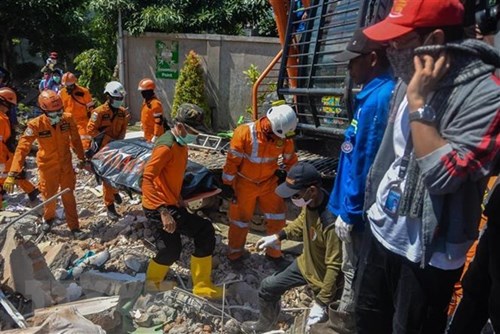Sugeng Pribadi, sub-director for earthquake management at the Jakarta-based Meteorological, Climatology and Geophysics Agency, was quoted by Kompas newspaper as saying that the first tsunami, which mostly affected Central Sulawesi province’s capital of Palu and its nearby coastal town of Donggala, reached them between one and two minutes after the magnitude 7.5 quake struck in the early evening.
    |
 |
|
Rescue force surmounting consequences of the tsunami in Indonesia |
According to Sugeng, though the epicenter of the earthquake was close to Donggala, the worst tsunami occurred in Palu. He said the tsunamis were not only triggered by the quake but also by undersea landslides.
The National Disaster Mitigation Agency reported that the death toll from the quake and tsunami reached 2,010 as of October 9, while the number of people listed as missing stood at 671 and those displaced by the disaster at 82,775.
Authorities will end the search for victims from October 11 and focus on reconstruction efforts.
The Australian Government committed 7.2 million USD to the Indonesian government for its recovery efforts via the Humanitarian Partnership. The sum will be used to support the lives of more than 58,000 people with basic requirements such as water, waste treatment, and shelter provision.
The Australian defence forces also helped the Indonesian Government carry necessities using aircraft.
New Zealand, the US, the European Union, the UK, Canada, the Philippines, and the International Organisation for Migration also announced their offers of aid to Indonesia.
At the same time, the US, Australia, New Zealand, Singapore, India, and Malaysia also sent military craft to Balik Papan to carry relief goods and victims.
Source: VNA